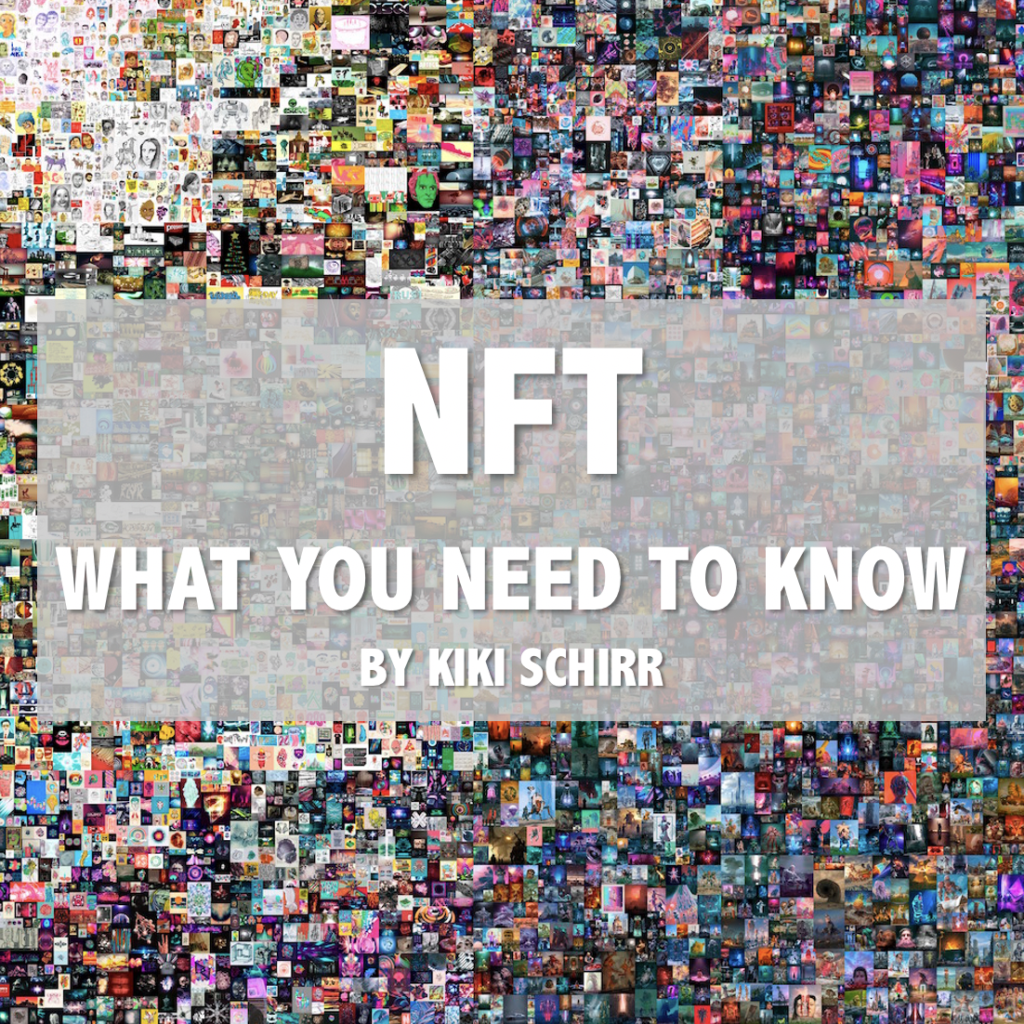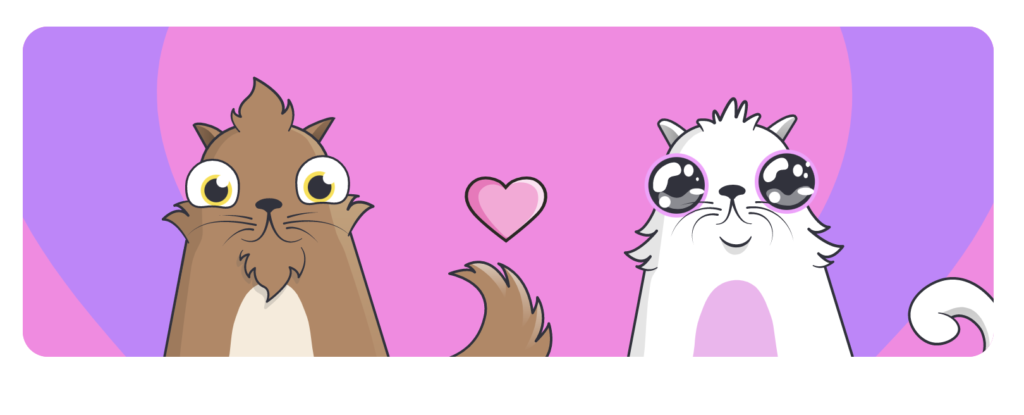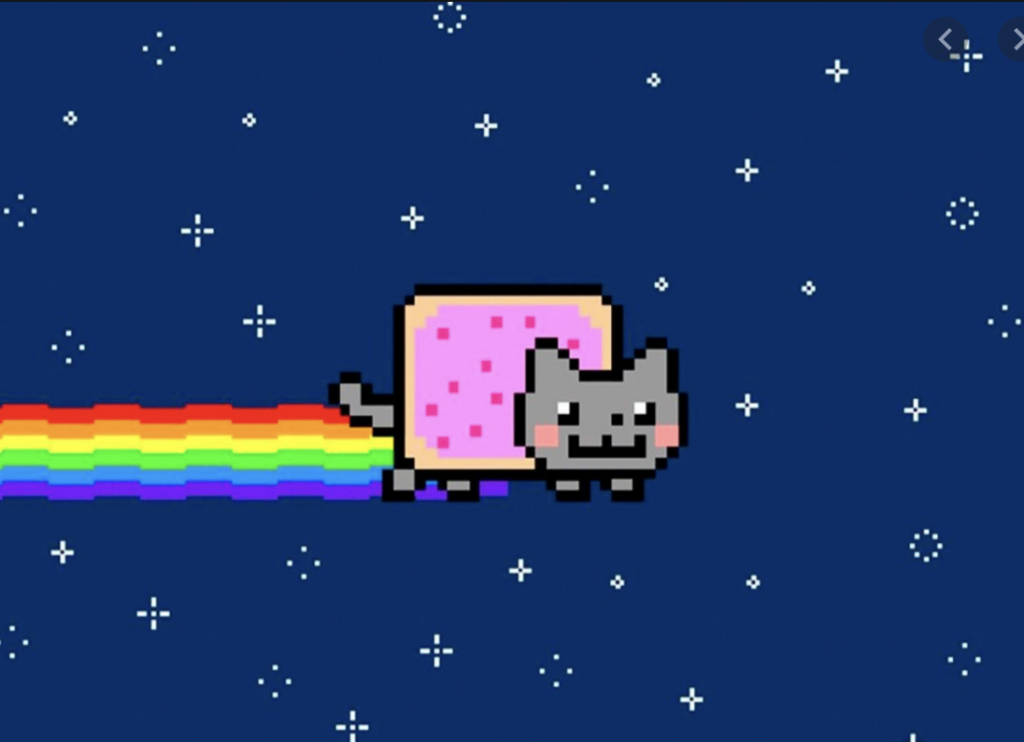
By Kiki Schirr, {grow} Contributing Columnist
The price of Bitcoin is at an all-time high. The buzz around blockchain is inescapable. People are connecting their Coinbase with their Fidelity investment account, they’re downloading MetaMask, and most recently, they’re buying NFT CryptoArt.
The hottest investment trend on the planet, the NFT — Non-Fungible Token — art craze is everywhere with significant implications for creators, and perhaps the absurd. Fox News reported that someone put their fart on a blockchain and sold it. At $85, it has nothing on Beeple’s record-setting sale at Christie’s auction for $69 million (more on that later) … but even so.
Did you ever think a fart would cost more than a newly-released video game?
Honestly, me either. So let’s take a deeper dive to understand why this is an important trend you need to understand.
The Cryptokitties zeitgeist
In late 2017, and only 2 months after their soft launch, an NFT on Ethereum began trading so wildly that it slowed all Ethereum transactions down with it.
These NFT collectibles featured, of all things, cats. Of course!
Even today, if you own a “Gen 0” (original, run of 5,000) Cryptokitty, or even better, a Founder Cat… well, you’ll have to treat us all to dinner sometime. On March 1st someone sold such a cat for $155,000.
 It’s crystal clear that CryptoArt can be lucrative. And news articles and blog posts are cropping up left and right trying to explain NFT. This is my attempt to make you knowledgeable enough to discuss NFTs at parties, help run social media accounts or ads for artists who create them, or even consider buying an NFT yourself.
It’s crystal clear that CryptoArt can be lucrative. And news articles and blog posts are cropping up left and right trying to explain NFT. This is my attempt to make you knowledgeable enough to discuss NFTs at parties, help run social media accounts or ads for artists who create them, or even consider buying an NFT yourself.
What is a blockchain?
At its heart, Blockchain is a database. For Bitcoin, it serves as a public ledger. Every 10 minutes, all the recent transactions are written to a new “block,” which is then linked back to the old block, like a chain.
Blockchain is distributed, which means it is kept on different servers and devices around the world. Because of the duplicate nature of each transaction, it’s close to impossible to alter a block.
Each transaction is timestamped, verified by multiple other users, and encrypted. It is a very secure system.
Right now, most transactions are financial. A common example would be a Bitcoin tip from a fan to a musician. However, transactions could include messages, songs, or any other data that can be digitized.
The concept is revolutionary because it provides a system of independent verification and data transmission that doesn’t rely on a government or established financial institution.
For the full {grow} post written on this topic, you can read this post about Bitcoin basics. (Notice the date! Mark Schaefer’s been on top of crypto for more than 5 years.)
What is Ethereum?
Most NFTs are built on Ethereum, an open-source blockchain that allows people to build contracts and “dApps” —decentralized applications — that run like programs on top of the Ethereum blockchain.
I’ve heard Ether (ETH) explained as “an alternative to Bitcoin,” or as “the first and biggest altcoin.” But this doesn’t give Ethereum its full credit.
Ethereum is not only a currency. While Bitcoin’s main use will always be as a currency (BTC), Ethereum is more than its currency (ETH – Ether) because it can execute a task/function from a smart contract saved on the chain. This will become relevant in a moment, so make a mental note.
What is special about the NFT?
NFTs have a key characteristic that most tokens lack. Non-fungible tokens are unique and can’t be traded 1-for-1 without negotiation.
To be “fungible,” a currency (whether dollars or shells or whiskey) can be exchanged for the same total or portion of another person’s currency. So it’s the standardization in currency, like minted coins being the same size and shape.
Non-Fungible Tokens do not meet the criteria for fungibility because each one is unique.** If I have the first NFT of Nyan Cat it can’t just be exchanged for an NFT of a song or even of an NFT released later with the same exact GIF/YouTube video.

** Some artists release many units as one NFT, as artists do with prints or books do with the run of a first edition. Those might seem fungible, but only for an identical unit produced within the same release.
So art on an NFT is a lot like a song on vinyl …
The best metaphor for creating an NFT is that it’s like making a vinyl record.
A record stores data, usually a song, just as NFTs store data, usually JPEG or GIFs.
Just like a vinyl record, an NFT can be created on only one record or on 10,000, but there’s only one first release of Meet The Beatles.
Some of the value from owning an original Meet The Beatles record is derived from the status of ownership and the joy of supporting the artist. Similarly, when collectors purchase NFTs, they look for artists on the rise, hoping their early works will accumulate value over time.
Another similarity is that those records can’t be duplicated or made to play another song. Once they’re created, they are that way forever. An NFT is what it is and will be a permanent record of that art.
Wait, NFTs are valuable because we think they’re valuable?
If you’re still “not sold” on an NFT actually having value, and you don’t mind reading a long but interesting post on some of the philosophy behind crypto policies, then Vitalik Buterin, co-founder of Ethereum, recently wrote a post on his blog called “The Most Important Scarce Resource is Legitimacy.”
“Why is it that Elon Musk can sell an NFT of Elon Musk’s tweet, but Jeff Bezos would have a much harder time doing the same?
“Elon and Jeff have the same level of ability to screenshot Elon’s tweet and stick it into an NFT dapp, so what’s the difference? To anyone who has even a basic intuitive understanding of human social psychology (or the fake art scene), the answer is obvious: Elon selling Elon’s tweet is the real thing, and Jeff doing the same is not. Once again, millions of dollars of value are being controlled and allocated, not by individuals or cryptographic keys, but by social conceptions of legitimacy.”
–Vitalik Buterin
Some of the more extreme fans of cryptocurrency would likely point out that since the US Dollar is now a fiat currency — it does not represent any tangible commodity — we are all quite familiar with legitimacy by general consensus.
But interestingly, NFTs on Ethereum and similar blockchains have more capability than a dollar or a record.
Why an NFT is better than vinyl
One way in which an Ethereum-based NFT differs from a record or a US Dollar is that you can save a contract to Ethereum — artists can write their art so that each time the art changes hands, the artist receives a cut of the sale. In this manner, artists get residuals from their digital art forever.
This should excite artists, for whom high-speed Internet has been a mixed bag. “Yay, everyone can see my art/song/video/book — wait, everyone can download my art/song/video/book, too!”
Because the NFT finally cracks the code for long-term creator monetization, this is a trend with staying power.
What do I need to start investing in CryptoArt?
Before you make any purchase of CryptoArt you should be comfortable with using MetaMask or a similar tool. You should also have a solid plan to keep your wallet secure.
MetaMask – Start with MetaMask. One thing you’ll need to know is that crypto is stored in online “wallets,” and if you lose access to that wallet, your crypto is gone. Therefore, you will need to be careful about Internet security. If you are uncomfortable with that level of responsibility, I’d suggest starting a Coinbase account before making any NFT purchases.
Coinbase – The downside to Coinbase is that while you have what looks like a wallet, technically, you’re allowing Coinbase to buy and hold crypto on your behalf. Although I think that Coinbase is pretty trustworthy and stable, others do not. So take advantage of its wonderful educational materials and start with buying and selling cryptocurrencies in small amounts. Once you’re more comfortable with internet security, physical login keys, and hardware wallets, you can move up to MetaMask.
A few NFT platforms
SuperRare – The most well-known of CryptoArt platforms
Nifty Gateway – The CryptoArt platform owned by Gemini, a Coinbase alternative
Foundation – This is the platform that sold Nyan Cat
OpenSea – The platform recently invested in by Andreessen Horowitz (a16z).
Zora – While this is a CryptoArt platform, Zora also deals in physical good pre-sales or of shares of a commodity (from digital art to an Air Force One). Before making any purchase, study the artist or creator. While the content itself might be appealing, if you’re hoping to own CryptoArt as an investment, the artist’s reputation is key. Try to find their social media accounts and early posts and see whether your favorite artist has momentum.
Grimes – One of the first major artists to embrace crypto (some would say with interesting timing, since the father of her child has recently been promoting Bitcoin via Twitter) the electropop musician has sold limited runs and single-editions of songs and videos.
Kings of Leon – In early March, the Tennessee band Kings of Leon opened sales for their latest album through YellowCard. The 16-day sale generated $2 million for the band.
Beeple – The artist who made millions selling one NFT at Christie’s Auction House. His real name is Michael Winkelmann and he’s a graphic designer from South Carolina. Prior to this now-famous auction, he was best known for tech-themed art on Instagram and Twitter (NSFW – often not safe for work).
Your Favorite Digital Artists – This links to a great article on 25 creators of CryptoArt, but you should also check to see if artists you already follow are beginning to make NFT art. So while discovering new artists is great, also watch for your old favorites to try the technology.
BitcoinTalk – An online forum purportedly started by the mysterious founder of Bitcoin, Satoshi Nakamoto himself. This is the centralized pool of crypto knowledge that we all dip from. The term “hodl” (as in “hold” misspelled) comes from this thread. As with any online community take caution when sharing personal information. Small comments add up to a larger picture over time! Check the Alternate Cryptocurrencies section for most posts regarding NFTs.
Clubhouse – The latest hot social media platform, Clubhouse, is a wonderful way to learn about NFT art and to connect with NFT artists themselves. Start by following @LadyPhoenix and her Crypto Basel Club. She is well-connected in the community and devoted to educating newcomers.
LinkedIn – Interestingly, I’ve been able to attend some of the most useful online gatherings or seminars by discovering them on LinkedIn. LinkedIn will allow you to follow thought leaders and topics, so follow a few in the crypto space, like the Ethereum Foundation, and join active crypto groups.
What are the downsides or risks of NFTs?
While there are many benefits to buying or making NFTs, I need to make you aware of a few large risks.
Like Bitcoin’s price, the price of NFT art is likely to be volatile. There’s a very good chance that an asset could drop in price, or the larger crypto market could tank. Never invest more than you could lose in speculative ventures. This article from the New York Times explains why there is probably an NFT bubble looming. And then, there is the danger of your NFT investment disappearing altogether.
There are also risks of bad actors, price-fixing, or FUD — a standard term for “fear, uncertainty, and doubt” — when someone deliberately spreads negativity about a project to decrease its value.
Even the Christie’s Beeple sale went under scrutiny. Some allege that the art buyer had vested financial interest in the growth of the NFT market.
There is also the inescapable reality that adding art to the weight of the blockchain has a toll on the environment. Ethereum currently uses as much energy as the entire nation of Ireland, home to 5 million people.
The reason blockchains can consume so much energy is a bit complicated, so here’s my quick take: Bitcoin, Ethereum, and many of the currencies that are most stable rely on something called “Proof of Work.” In order to hash new blocks, computers all over the world run calculations, a process called “mining,” to try to find an elegant solution to a difficult computation first.
What this means is that each new block is created by plugging a bunch of very powerful CPUs, also known as “mining rigs” into the electrical grid.
Why should NFTs matter to marketers?
Although it might not seem that the world of cutting-edge art and social media marketing would overlap, that couldn’t be further from the truth. Digital marketing is a must for any artist looking to raise money through selling NFTs.
Artists interested in pivoting toward CryptoArt will need to alter the appeal of their existing social media accounts, design new customer archetypes, and in some cases, begin entirely separate accounts. If you’re looking for freelance work, this is a very hot space to be in.
For some great tips on networking within the crypto community, check out this {grow} post, How to Get Started as a Crypto Social Media Marketer.
And, as a creator, this could be an exciting new avenue for monetization and growth. I’m an artist who has resisted the market so far but as the benefits increase and the market stabilizes and goes mainstream, it is something I need to consider!
If you have any questions, feel free to drop them in the comments so we can all learn together.
 Kiki Schirr is a freelance marketer, artist, and writer who enjoys new technologies. She has worked with crypto companies and learned a little Solidity, but it’s her bitcointalk account age that generally impresses cryptofolk. You can email Kiki Schirr at her full name without spaces at Gmail. Just remember that she responds faster on Twitter.
Kiki Schirr is a freelance marketer, artist, and writer who enjoys new technologies. She has worked with crypto companies and learned a little Solidity, but it’s her bitcointalk account age that generally impresses cryptofolk. You can email Kiki Schirr at her full name without spaces at Gmail. Just remember that she responds faster on Twitter.


